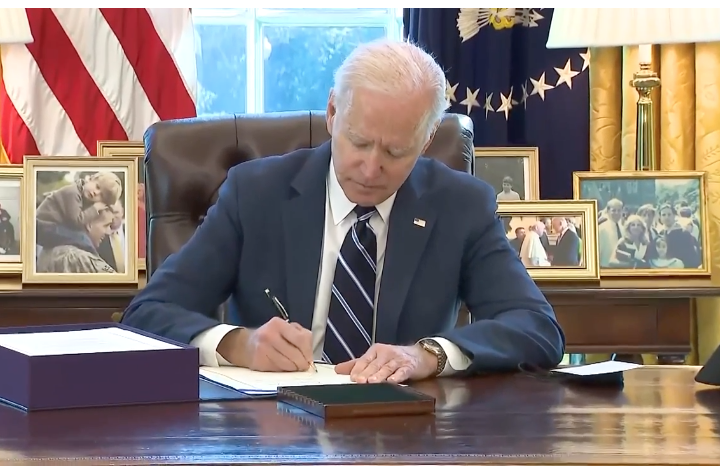$335 Billion in Stimulus Payments Disbursed Under American Rescue Plan, With Third Batch To Come

Several million more payments in the third batch of Economic Impact Payments from the American Rescue Plan are being disbursed beginning today, bringing the total disbursed so far to more than 130 million payments worth approximately $335 billion, according to a US government news release.
The Internal Revenue Service, the US Department of the Treasury and the Bureau of the Fiscal Service stated they began processing the third batch of the pandemic recovery stimulus checks on March 26, with an official payment date of March 31. Some people will receive direct payments in their accounts earlier as provisional or pending deposits.
Here is additional information on this batch of payments:
- Includes the first of ongoing supplemental payments for people who earlier in March received payments based on their 2019 tax returns but are eligible for a new or larger payment based on their recently processed 2020 tax returns. These “plus-up” payments could include a situation where a person’s income dropped in 2020 compared to 2019, or a person had a new child or dependent on their 2020 tax return, and other situations.
- Includes payments for people for whom the IRS previously did not have information to issue a payment but who recently filed a tax return and qualify for an Economic Impact Payment. Payments to this group — and the “plus-up” payments noted above — will continue on a weekly basis going forward, as the IRS continues processing tax returns from 2020 and 2019.
- In total, this third batch includes more than 4 million payments, with a total value of more than $10 billion. (More than 2 million are direct deposit payments with a total value of more than $5 billion and approximately 2 million are paper check payments with a total value of nearly $5 billion.
For the first two batches of payments, which began processing on March 12 and March 19, payments were primarily sent to eligible taxpayers who filed 2019 or 2020 returns. People who don’t typically file a return but who successfully used the Non-Filers tool on IRS.gov last year were also sent payments in these first two batches, either as a direct deposit or by paper check or an EIP Card, a prepaid debit card.
Starting Friday, a large set of payments will begin going to Social Security and other federal beneficiaries who didn’t file a 2020 or 2019 tax return and didn’t use the Non-Filers tool last year. These payments will go to Social Security retirement, survivor or disability (SSDI), Supplemental Security Income (SSI), and Railroad Retirement Board (RRB) beneficiaries. These payments will begin to be issued this weekend, with the projection that the majority of these payments will be sent electronically and received on April 7.
No action is needed by most people to obtain this round of Economic Impact Payments. People can check the Get My Payment tool on IRS.gov on to see if the their payment has been scheduled. The IRS notes that the Get My Payment tool on IRS.gov will not be updated until the weekend of April 3-4 with information for Social Security and other federal beneficiaries expecting payments next week.
The IRS continues to review data received for Veterans Affairs (VA) benefit recipients and expects to determine a payment date and provide more details soon. Currently, the IRS estimates that Economic Impact Payments for VA beneficiaries who do not regularly file tax returns could be disbursed by mid-April. VA beneficiary payment information will be available in the Get My Payment tool at a future date.
Special reminder for those who don’t normally file a tax return
Some federal benefits recipients may need to file a 2020 tax return, even if they don’t usually file, to provide information the IRS needs to send payments for any qualified dependent. Eligible individuals in this group should file a 2020 tax return to be considered for an additional payment for their qualified dependent as quickly as possible.
People who don’t normally file a tax return and don’t receive federal benefits may qualify for these Economic Impact Payments. This includes those experiencing homelessness, the rural poor and others. For those eligible individuals who didn’t get a first or second Economic Impact Payment or got less than the full amounts, they may be eligible for the 2020 Recovery Rebate Credit, but they’ll need to file a 2020 tax return. See the special section on IRS.gov: Claiming the 2020 Recovery Rebate Credit if you aren’t required to file a tax return.
Free tax return preparation is available for qualifying people.
The IRS reminds taxpayers that the income levels in this new round of Economic Impact Payments have changed. This means that some people won’t be eligible for the third payment even if they received a first or second Economic Impact Payment or claimed a 2020 Recovery Rebate Credit. Payments will begin to be reduced for individuals making $75,000 or above in Adjusted Gross Income ($150,000 for married filing jointly). The payments end at $80,000 for individuals ($160,000 for married filing jointly); people with Adjusted Gross Incomes above these levels are ineligible for a payment.










